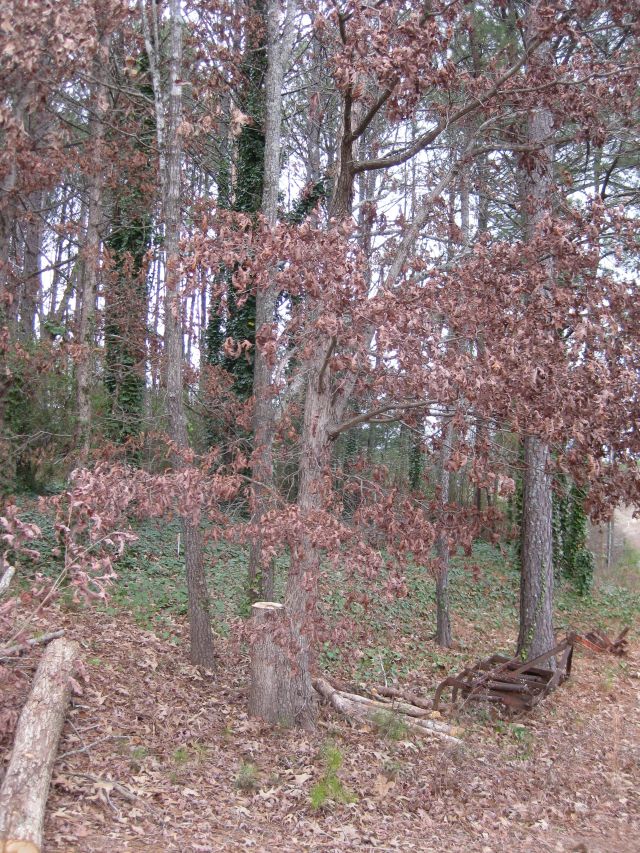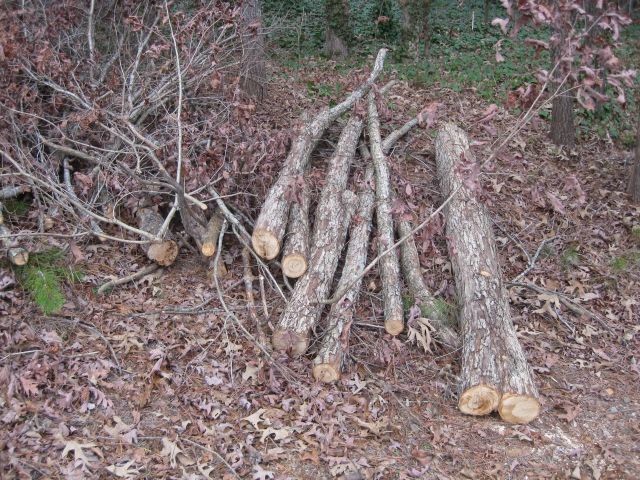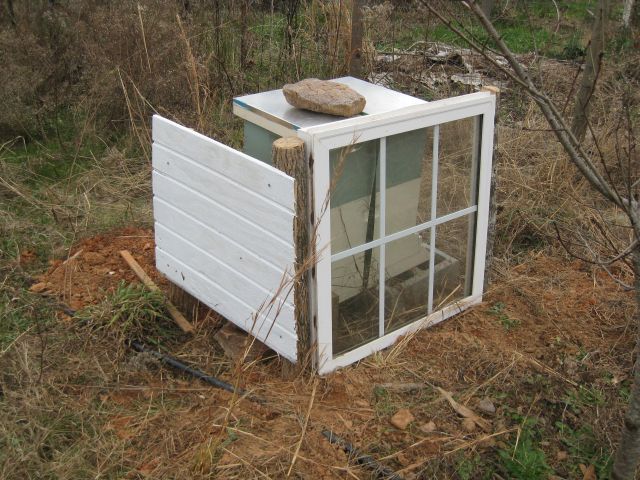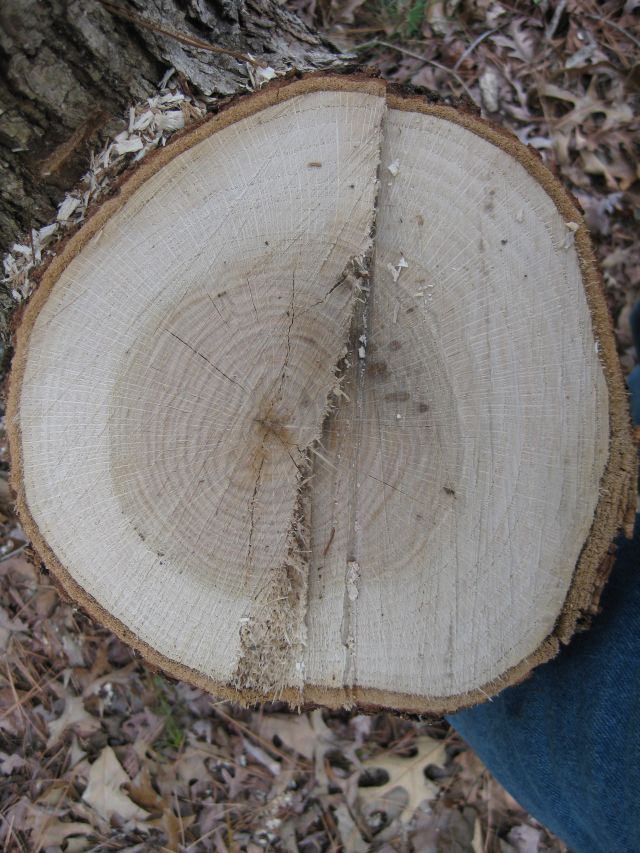I really am not into cutting down trees gratuitously, especially not an oak tree, which is one of my favorite trees. When I made a road through the woods I selected a path which would require the fewest and smallest trees to be removed. But this week I needed wood posts. I did not wish to purchase the treated 4″ by 4″ posts because they are loaded with preservatives which will leach and be absorbed by the roots of my fruit trees, vines etc. Composite posts deform and are expensive. Even cedar posts rot over time. I concluded oak posts should hold their ground for several years, which is all I need at this time. But which oak tree to cut. Unusually, several oak trees have two trunks from the same base. Eventually the tree may split. It seems to incur little sacrifice to cut one of the trunks, the one which appears less vibrant. Then the root structure can feed the surviving trunk which will put out branches on the side where the other trunk stood.

It was quick work to cut down the one trunk and then slice it to leave a main trunk and six 8 foot length future posts. Plus the branches will dry and provide good firewood. The main trunk is too large for a post and I ordered shitake inseminated dowel plugs so I can have shitake mushroom logs. I have been very successful with shitake growing from oak logs. Some of the posts will be used to carry the trellis for my kiwi vines which I recently planted.

And there is always a use for oak posts. My first beehive is well protected from winter winds but my second beehive needed protection. With my clam posthole digger I dug 3 2 foot holes and grounded 3 small diameter oak posts to which I attached a surplus window for west wind protection yet still providing setting sun exposure, and a primed plywood rectangle for north wind protection. My woods provide a windbreak to the east and I leave the south side open for the south facing entrance and because winds from the south are less common.


I happened to notice the growth rings on the stump of the oak tree and this got me thinking as to why there are growth rings. I know about heartwood and sapwood – the heartwood which is at the center of the trunk is darker in color (from accumulation of compounds), provides structural support and no longer transports water and the lighter colored sapwood conducts water.

But what causes the growth rings which are the alternating bands of light wood and dark wood. The light ring is produced by large thin-walled cells and the dark ring by small, thick-walled cells. The large cells are formed during the rainy season when the cells grow and the small cells during the period of dormancy or no growth. Dormancy occurs during the winter in cold climates and during the dry season in tropical climates. I suppose if it rained evenly throughout the year you would not get growth rings?

Seems like tropical rainforest trees don’t have visible rings, but there are still chemical changes in the wood which can be tracked.
http://waynesword.palomar.edu/treedate.htm
Nice reference, thank you. I can understand nutrient uptake varying with the change in the seasons and during the growing season when leaves and buds develop the tree will absorb different nutrients. So does a true tropical rain forest have a growing season (in the link it refers to a “growing season”) or is it a 365 day growing season?